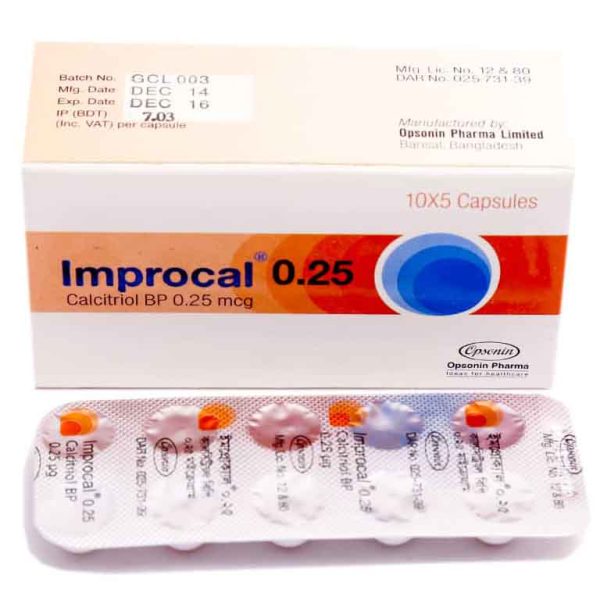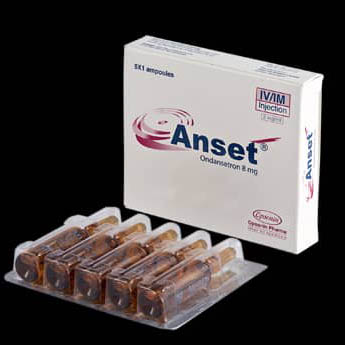Description
Brand Name: Onset 4
Generic Name: Ondansetron 4mg
How does this medication work? What will it do for me?
Ondansetron belongs to the class of medications called 5-HT3 receptor antagonists. This medication is used to prevent nausea and vomiting associated with certain types of cancer chemotherapy and radiation. It is also used to prevent and treat the nausea and vomiting that occurs after surgery. It works by reducing the effects of a naturally-occurring chemical in the body called serotonin, which causes nausea and vomiting.
This medication may be available under multiple brand names and/or in several different forms. Any specific brand name of this medication may not be available in all of the forms or approved for all of the conditions discussed here. As well, some forms of this medication may not be used for all of the conditions discussed here.
Your doctor may have suggested this medication for conditions other than those listed in these drug information articles. If you have not discussed this with your doctor or are not sure why you are taking this medication, speak to your doctor. Do not stop taking this medication without consulting your doctor.
Do not give this medication to anyone else, even if they have the same symptoms as you do. It can be harmful for people to take this medication if their doctor has not prescribed it.
How should I use this medication?
The recommended adult dose of ondansetron for nausea and vomiting caused by chemotherapy is based on severity of the symptoms and ranges from 8 mg to 24 mg daily given in divided doses.
Doses for children are based on body size. The recommended dose for children is 3 to 5 mg per square metre of body surface area and will be calculated by your doctor.
Many things can affect the dose of medication that a person needs, such as body weight, other medical conditions, and other medications. If your doctor has recommended a dose different from the one given here, do not change the way that you are taking the medication without consulting your doctor.
Ondansetron should be taken ½ to 1 hour before chemotherapy treatment. After this first dose, it should be taken every 8 to 12 hours for up to 5 days.
Use an oral syringe to measure each dose of the liquid, as it gives a more accurate measurement than household teaspoons.
The recommended adult dose of ondansetron to treat and prevent nausea and vomiting caused by radiation therapy is 8 mg taken by mouth, 1 to 2 hours before treatment, and then every 8 hours for up to 5 days after treatment.
The recommended adult dose of ondansetron to prevent nausea and vomiting caused by surgery is 16 mg taken by mouth, 1 hour before anesthesia. Alternatively a dose of 4 mg may be given by intravenous (into a vein) injection at the time of surgery. After surgery, a single dose of 4 mg of ondansetron may be given by intravenous injection to treat nausea or vomiting.
Ondansetron is not effective for treating or preventing nausea and vomiting caused by motion.
It is important to take this medication exactly as prescribed by your doctor. If you miss a dose, take it as soon as possible and continue with your regular schedule. If it is almost time for your next dose, skip the missed dose and continue with your regular dosing schedule. Do not take a double dose to make up for a missed one. If you are not sure what to do after missing a dose, contact your doctor or pharmacist for advice.
Store all forms of this medication at room temperature, protect it from light and moisture, and keep it out of the reach of children.
Do not dispose of medications in wastewater (e.g. down the sink or in the toilet) or in household garbage. Ask your pharmacist how to dispose of medications that are no longer needed or have expired.
Who should NOT take this medication?
Do not take this medication if you:
are allergic to ondansetron or any ingredients of the medication are taking the medication apomorphine
What side effects are possible with this medication?
Many medications can cause side effects. A side effect is an unwanted response to a medication when it is taken in normal doses. Side effects can be mild or severe, temporary or permanent.
The side effects listed below are not experienced by everyone who takes this medication. If you are concerned about side effects, discuss the risks and benefits of this medication with your doctor.
The following side effects have been reported by at least 1% of people taking this medication. Many of these side effects can be managed, and some may go away on their own over time.
Contact your doctor if you experience these side effects and they are severe or bothersome. Your pharmacist may be able to advise you on managing side effects.
constipation, flushing or feeling warm, low blood pressure, unusual tiredness or weakness.
Although most of the side effects listed below don’t happen very often, they could lead to serious problems if you do not seek medical attention.
Check with your doctor as soon as possible if any of the following side effects occur:
Blurred vision, Difficulty moving or abnormal body movement, Dizziness, pain, redness, or burning at place of injection, rapid pounding heartbeat.
Stop taking the medication and seek immediate medical attention if any of the following occur:
seizures, signs of a serious allergic reaction (i.e., abdominal cramps, difficulty breathing, nausea and vomiting, or swelling of the face and throat), signs of heart problems (e.g., fast, irregular heartbeat or pulse, chest pain, sudden weight gain, difficulty breathing, leg swelling), signs of serotonin syndrome (e.g., agitation, confusion, mood changes, decreased coordination, hallucinations, fever, sweating), signs of a severe skin reaction (e.g., a rash combined with fever or discomfort, a rash covering a large area of the body, a rash that spreads quickly, blistering, peeling), temporary blindness.
Some people may experience side effects other than those listed. Check with your doctor if you notice any symptom that worries you while you are taking this medication.
Are there any other precautions or warnings for this medication?
Before you begin using a medication, be sure to inform your doctor of any medical conditions or allergies you may have, any medications you are taking, whether you are pregnant or breast-feeding, and any other significant facts about your health. These factors may affect how you should use this medication.
Allergy: People who have had an allergic reaction to dolasetron or granisetron are advised not to take ondansetron. Before you take ondansetron, inform your doctor about any previous adverse reactions you have had to medications. Contact your doctor at once if you experience signs of an allergic reaction such as skin rash, itching, difficulty breathing, or swelling of the face and throat.
Abnormal heart rhythms: Very rarely, ondansetron can affect the heart’s electrical activity and cause an irregular heartbeat. This is more likely to happen with the injectable form of ondansetron. Certain medications (e.g., sotalol, quinidine, thioridazine, chlorpromazine, droperidol, pimozide, gatifloxacin, moxifloxacin, mefloquine, pentamidine, arsenic trioxide, dolasetron mesylate, probucol, tacrolimus) can increase the risk of a type of abnormal heart rhythm called QT prolongation, and should not be used in combination with ondansetron.
You are more at risk for this type of abnormal heart rhythm and its complications if you:
-are female
-ae older than 65 years of age.
-have a family history of sudden cardiac death
-have a history of heart disease or abnormal heart rhythms
-have a slow heart rate
-have congenital prolongation of the QT interval
-have diabetes
-have had a stroke
-have low potassium, magnesium, or calcium levels
-have nutritional deficiencies.
If you have heart disease and abnormal heart rhythms, or are taking certain medications (e.g., verapamil, atazanavir), discuss with your doctor how this medication may affect your medical condition, how your medical condition may affect the dosing and effectiveness of this medication, and whether any special monitoring is needed. Your doctor may monitor your heart rate using a test called an electrocardiogram (ECG) while you are using this medication.
Liver function: Ondansetron is broken down and removed from the body by the liver. Decreased liver function slows down the removal of the medication from the body and increases the risk of side effects from ondansetron. If you have liver disease or reduced liver function, discuss with your doctor how this medication may affect your medical condition, how your medical condition may affect the dosing and effectiveness of this medication, and whether any special monitori






